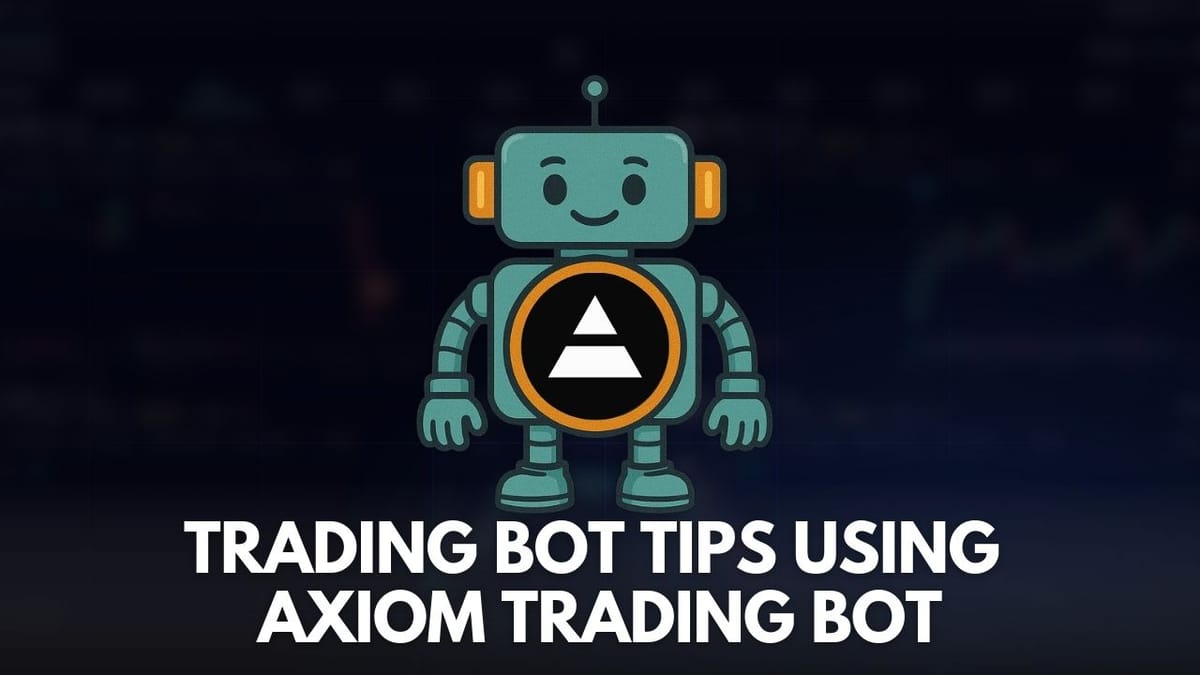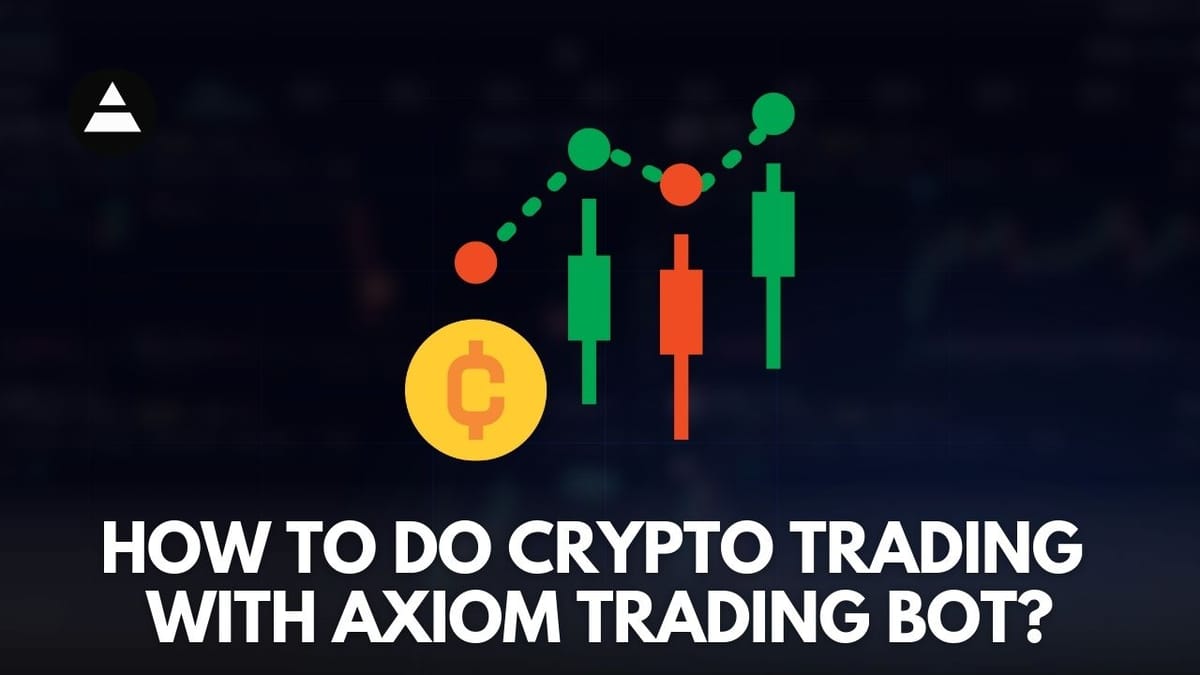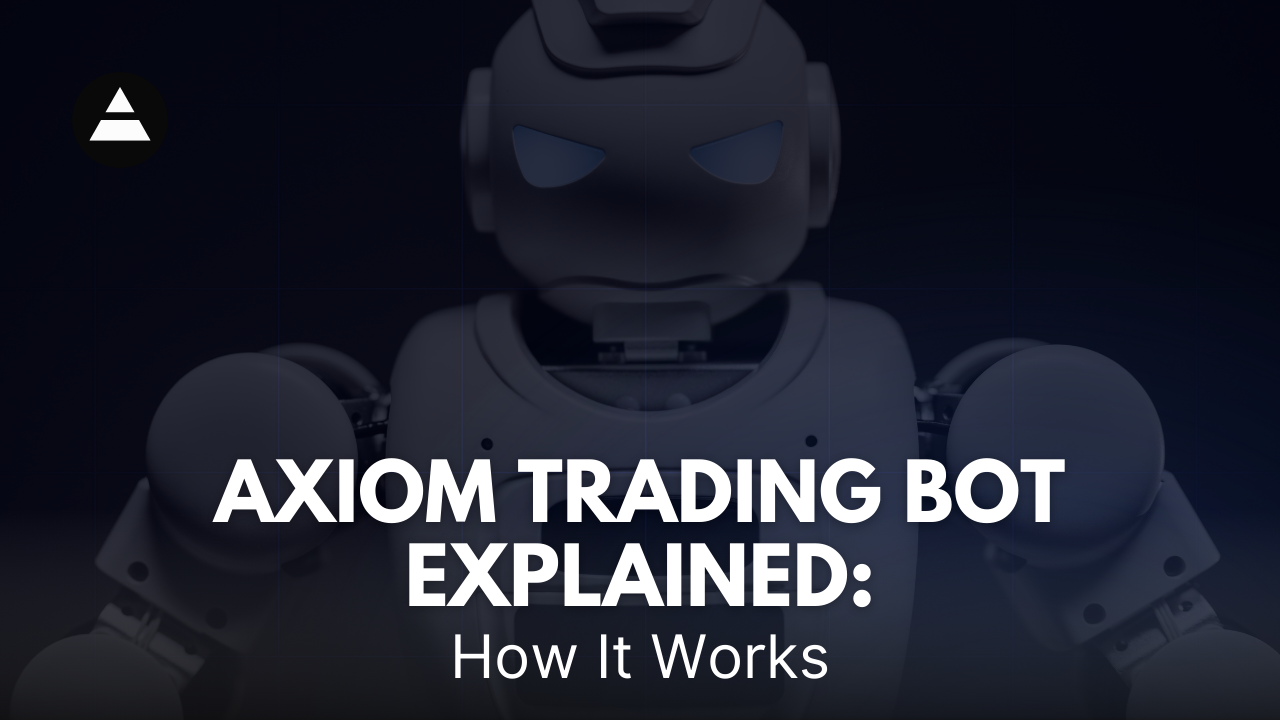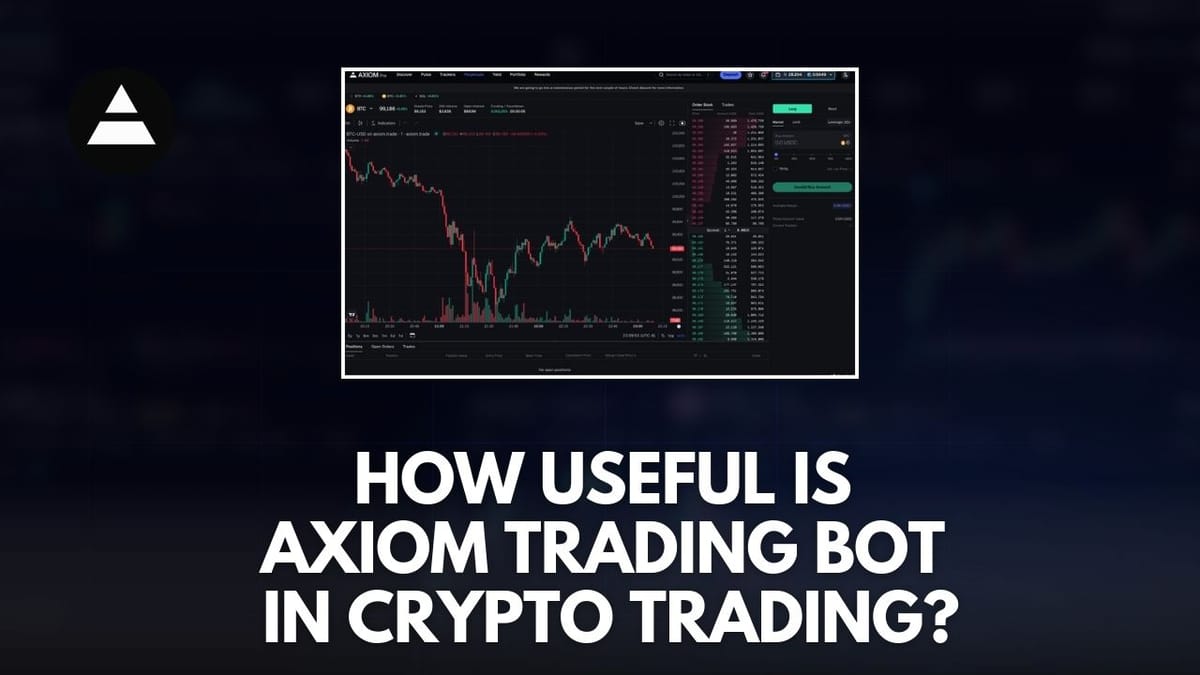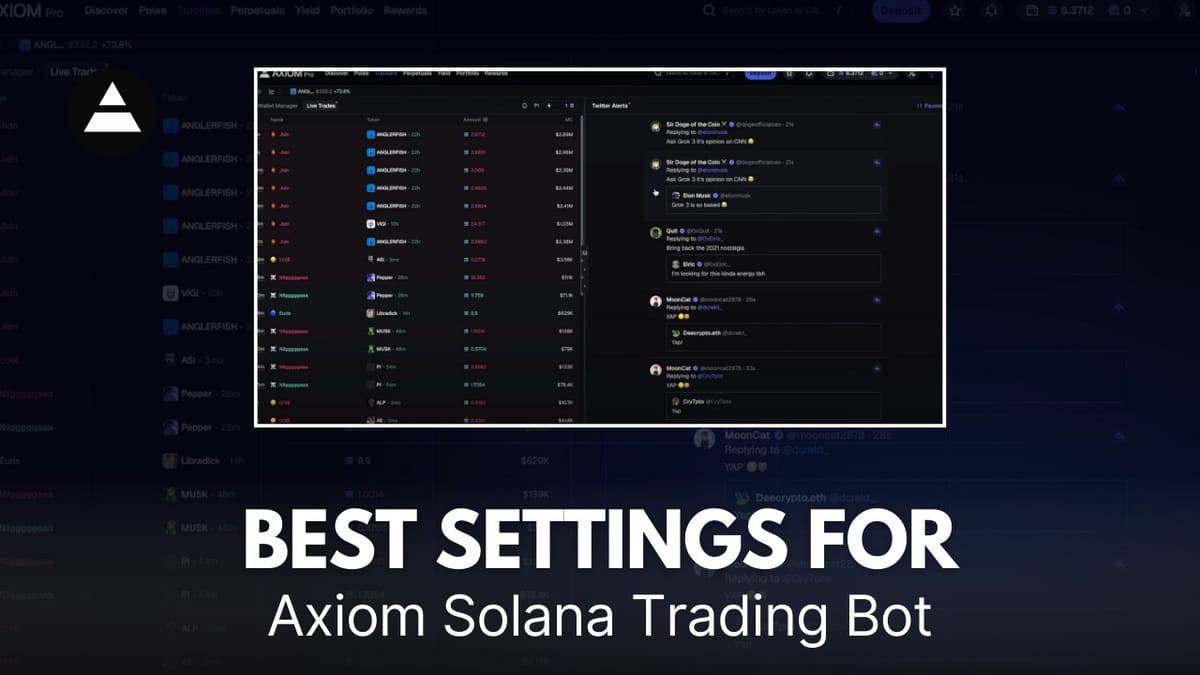When to Buy and Sell Crypto?
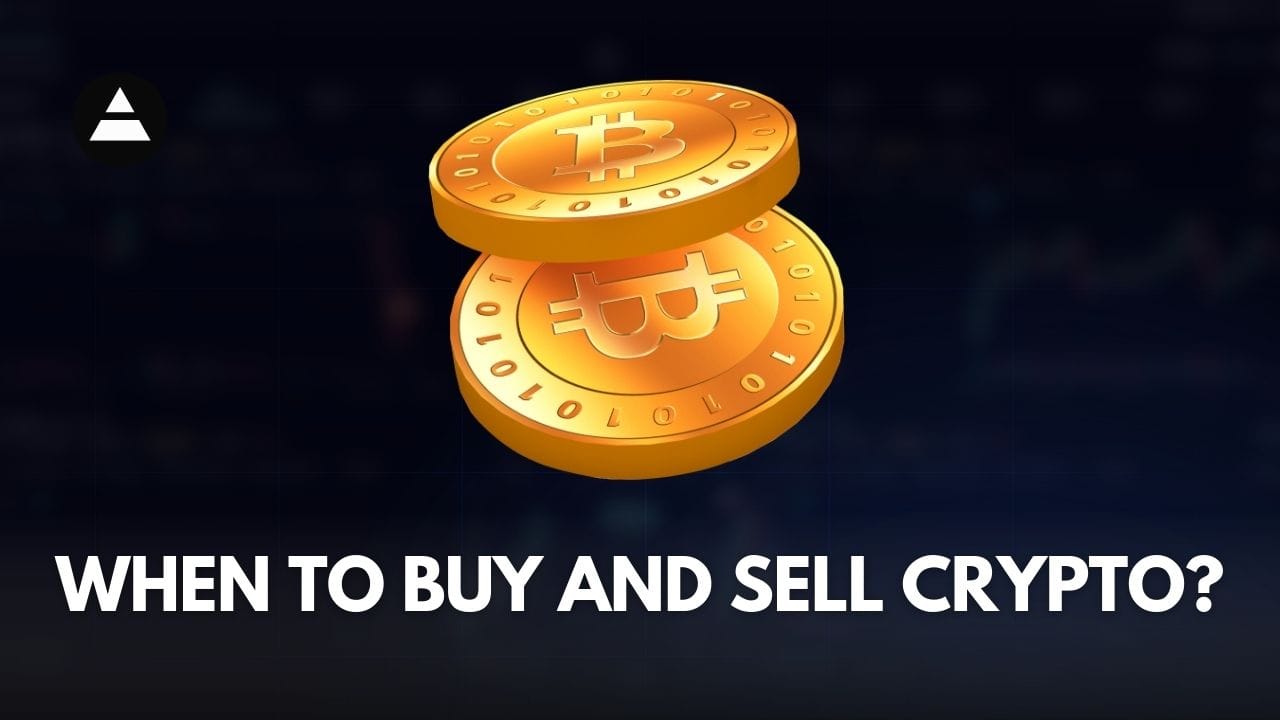
Thinking about getting into crypto or maybe you're already trading and want to get better?
It can feel like a lot, especially with how fast things change.
Figuring out the best times to buy and sell crypto is key, and there are tools out there that can really help you make smarter moves.
This guide breaks down how to approach the market, manage your trades, and keep your assets safe.
Key Takeaways
- Understand market trends to find good times to buy and sell crypto.
- Use tools to analyze token launches and trading data for better decisions.
- Practice specific trading methods like spot buys and limit orders for more control.
- Trade across different blockchains easily using platforms that support multiple networks.
- Keep your crypto safe with non-custodial wallets and secure private key management.
Understanding Market Dynamics for Crypto Transactions
Understanding the ebb and flow of the crypto market is key to making smart moves.
It’s not just about picking the next big coin; it’s about timing your entry and exit points.
Think of it like this: Bitcoin's price cycles have historically followed predictable patterns, but lately, things are shifting.
New types of investors and clearer regulations are changing the game, making it important to watch how these dynamics affect prices.
You need to be aware of these shifts to know when to buy and when to sell your crypto.
Identifying Optimal Buy and Sell Opportunities
Spotting the right moment to buy or sell can feel like a guessing game, but there are ways to get a better read on the market.
Watching price trends is a big part of it.
A bull market usually means prices are going up, with consistent higher highs.
On the flip side, a bear market sees sharp drops.
Understanding these phases helps you position yourself better.
It’s also useful to look at broader market cycles, which often include accumulation, growth, bubble, and crash phases.
Analyzing Token Launch Activity
New tokens pop up all the time, and their launches can be wild.
These events often see a lot of activity, and sometimes, coordinated buying happens in bundles.
Tools like Axiom’s bundle detection can help you see if multiple buys are happening at once within the same block.
This isn't just about token launches; it can happen anytime.
Axiom's logic looks for patterns, like four or more transactions in a block, and filters out wallets that aren't consistently bundling.
This gives you a clearer picture than just vague warnings you might get elsewhere.
Leveraging Advanced Trading Analytics
Beyond just watching prices, advanced analytics can give you an edge.
Things like tracking social sentiment, especially on platforms like Twitter, can offer insights into market mood.
Axiom, for example, integrates Twitter monitoring to help you gauge hype and potential momentum shifts.
Combining this with wallet tracking, which shows how larger holders are moving their assets, provides a more complete view of market activity.
This kind of data helps you make more informed decisions, rather than just reacting to price swings.
Strategic Approaches to Buy and Sell Crypto
When you're trading crypto, having a solid plan for buying and selling is key.
It's not just about picking random moments; it's about using smart methods to get the best results.
Think of it like this: you wouldn't just randomly throw darts at a board and expect to hit the bullseye, right?
Trading is similar.

Executing Spot Buys with Precision
Spot buying is pretty straightforward.
You decide you want to buy a crypto, and you do it at the current market price.
It's direct. For instance, if you see a coin you like and its price is $10, you buy it for $10.
This is the most common way people get into new assets.
It’s simple, but you need to be aware of the price at the exact moment you place the order.
Sometimes, prices can jump or drop in seconds, especially in volatile markets.
You can use tools like Axiom Trade to execute these buys quickly, minimizing the chance of missing your entry point.
It’s a good idea to have a strategy, like dollar-cost averaging, where you buy fixed amounts at regular intervals, regardless of the price.
This can help smooth out your purchase price over time.
You can check out some beginner strategies to get started here.
Utilizing Quick Sell Features
Sometimes, you just need to get out of a position fast.
Maybe the market is tanking, or you've hit your profit target and want to lock it in.
Quick sell features are designed for this.
They let you sell your crypto at the current market price with just a click.
It’s the opposite of a spot buy.
If you need to exit a trade rapidly, this is your go-to.
It’s important to know that like quick buys, quick sells happen at the market price, which can fluctuate.
Having a clear exit strategy is always a good plan.
Implementing Limit Orders for Control
Limit orders give you more control over your trades.
Instead of buying or selling at the current market price, you set a specific price at which you want to buy or sell.
For example, you could set a limit order to buy a coin at $9.50, even if it's currently trading at $10.
Your order will only execute if the price drops to $9.50 or lower.
Similarly, you could set a limit order to sell at $11, and it will only sell if the price reaches $11 or higher.
This method helps you avoid buying too high or selling too low, especially when you’re not actively watching the market.
It’s a way to trade more strategically and avoid emotional decisions.
Many platforms, including Axiom Trade, offer limit orders, allowing you to set your desired entry and exit points with precision.
Navigating Multi-Chain Trading
The crypto world isn't just about one blockchain anymore.
You've probably heard about multi-chain trading, and it's a big deal for how you interact with digital assets.
It basically means you can move and trade your crypto across different blockchain networks, like Solana, Ethereum, or others, all from one place.
This opens up a lot more opportunities and can make things cheaper and faster.
Accessing Diverse Blockchain Ecosystems
Think of each blockchain as its own little world with its own unique tokens and applications.
Being able to access these different ecosystems means you're not limited to just one corner of the crypto market.
You can explore new projects, find different investment options, and generally get a broader view of what's happening.
Tools like a multichain crypto wallet help you manage assets across these various networks, giving you access to different dApps and DeFi platforms without a hassle.
It's like having a passport to the entire crypto universe.
Trading Across Multiple Networks Seamlessly
This is where the real convenience comes in.
Instead of juggling multiple wallets or complex bridges, multi-chain trading aims to simplify the process.
You can swap tokens from one chain to another, often with lower fees and quicker transaction times.
This is a big step forward for how smart traders manage their portfolios.
For instance, Axiom is built to support trading across different networks, making it easier to move assets and capitalize on opportunities wherever they pop up.
It’s about making cross-chain swaps smoother and more efficient, which can really improve your overall trading approach.
Simplifying Cross-Chain Asset Management
Managing assets across different blockchains can get messy.
You might have tokens on Solana and others on Ethereum, and keeping track of it all can be a headache.
Multi-chain solutions aim to consolidate this, allowing you to see and manage all your assets from a single interface.
This not only saves you time but also reduces the risk of errors.
Having a unified view makes it easier to monitor your holdings and make informed decisions about when to buy or sell.
It’s about bringing order to the complexity of the multi-chain world, making your trading experience much more straightforward.
Enhancing Your Crypto Trading Experience
Want to get more out of your crypto trading?
It's not just about picking the right coin; it's also about how you manage your trades and keep an eye on things.
Think of it like this: you wouldn't go into a race without checking your gear, right?
Your crypto trading experience is similar.
The Role of Wallet Tracking in Trading
Keeping tabs on your digital assets is pretty important.
Wallet tracking tools can show you where your crypto is and how it's performing across different accounts.
This helps you get a clearer picture of your overall holdings, which is super useful when you're trying to make smart decisions about buying or selling.
It’s like having a dashboard for all your crypto.
Monitoring Social Sentiment with Twitter Integration
Sometimes, what people are saying online can actually move the market.
Many traders keep an eye on social media, especially Twitter, to gauge the general mood around a particular coin.
Some platforms, like Axiom, even have built-in Twitter monitoring.
This feature can help you spot trends or potential shifts in interest before they become obvious elsewhere.
It’s a way to tap into the collective buzz, but remember, it's just one piece of the puzzle.
You still need to do your own research, of course.
For more on how to approach the market, check out this guide on making your first trade.
Maximizing Gains Through High-Speed Execution
In the fast-paced world of crypto, speed really matters.
When you decide to buy or sell, getting that transaction processed quickly can make a big difference, especially during volatile periods.
The faster your trade executes, the closer you are to getting the price you expected.
This is where tools that offer high-speed execution come into play.
Platforms like the axiom trading bot are built with speed in mind, aiming to reduce delays and help you act on opportunities without missing out.
It’s about making sure your intentions translate into action as quickly as possible, which is key for anyone serious about swing trading or other active strategies.
Security and Control in Crypto Trading
When you're trading crypto, keeping your assets safe and making sure you're in charge is super important.
It's not just about making money; it's about protecting what you have.

Ensuring Asset Security with Non-Custodial Infrastructure
Think about where your crypto actually lives.
With non-custodial solutions, like the one Axiom Trade uses, your assets are always under your control.
This means you hold the keys, and no third party can access your funds without your permission.
It’s a big deal because it puts you directly in charge of your digital wealth.
You can check out how this works with partners like Turnkey to get a better idea of the security measures involved.
This approach is key for crypto compliance and risk management.
Managing Private Keys Securely
Your private keys are like the master keys to your crypto kingdom.
If you lose them, or if someone else gets them, your crypto is gone.
That's why it's so important to manage them carefully.
Using a wallet that prioritizes secure key management is a good start.
It’s about making sure these keys are stored safely and aren't easily exposed. Protecting your digital assets starts with the right wallet.
Maintaining Full Control Over Your Transactions
Ultimately, you want to be the one making the decisions about your crypto.
This means having the ability to execute trades, manage your holdings, and interact with decentralized applications without intermediaries dictating terms.
Platforms that integrate directly with decentralized protocols, like Axiom Trade does, allow your funds and transactions to remain fully on-chain and under your command.
This direct control is what makes crypto trading unique and gives you the power to manage your investments as you see fit.
It’s also important to monitor your transactions for any unusual activity, which is a key aspect of crypto trading.
Keeping your crypto secure and maintaining control isn't just a feature; it's the foundation of responsible trading. It means understanding where your assets are held and who controls the keys.
Identifying Bundled Transactions
When you're trading crypto, especially during new token launches, you might run into something called a 'bundled transaction'.
Basically, this is when multiple buy orders get grouped together and processed in the same block on the blockchain.
It can happen really fast, sometimes within milliseconds of each other.
Most platforms might just give you a general heads-up, but it’s helpful to know how to spot them more accurately.

Understanding Simultaneous Buy Transactions
Think of a blockchain block like a train car.
It can only hold so much.
When lots of people want to buy a new token at the same time, their transactions can get bundled into that single block.
This is common during initial token offerings or when a popular token is about to launch.
It’s a way for the network to process many requests efficiently, but it can also affect how your own trades execute.
Axiom's Bundle Detection Logic
At Axiom Trade, we’ve developed a specific way to identify these bundles.
We look for two main things: first, if there are four or more transactions happening within the same block.
If that condition is met, we flag it as a potential bundle.
Second, we filter out wallets that only participate in one bundle and then stop.
This helps us focus on wallets that are consistently involved in bundling, giving you a clearer picture of potential coordinated activity.
This logic helps reduce the noise from random transactions that might look like a bundle but aren't.
Distinguishing Axiom's Detection from Other Tools
It’s important to know that not all bundle detection is the same.
Some tools might only flag bundles during specific events, like a token launch, or rely on signals from the token deployer.
Axiom’s approach is different because we detect bundles whenever they occur, not just at the start of a token's life.
We also use more precise filtering to cut down on false positives.
For instance, if a wallet isn't consistently bundling, we won't flag its isolated transactions as part of a larger pattern.
This means our reported bundling percentages might differ from other services, but we aim for a more accurate view of trading risk.
You can see how this works in action when you're looking at token launch activity.
Understanding bundled transactions helps you make more informed decisions, especially when dealing with high-volume trading periods. It’s about seeing the bigger picture of how transactions are processed on the network.
Using tools like Axiom's Bundle Checker can give you an edge, especially when you're looking at account abstraction features that optimize transaction costs.
It’s all part of trading smarter, not just faster.
Remember, even advanced crypto trading bots can benefit from this kind of insight.
Earning Passive Income with Crypto Assets
Looking to make your crypto work for you?
Earning passive income is a great way to grow your holdings without constantly watching the charts.
It’s about letting your assets generate returns over time.
Think of it like earning interest in a bank, but with digital assets.
There are several ways to do this, and it’s becoming more accessible than ever.

Generating Yield on Your Holdings
One of the most straightforward methods is through crypto savings accounts.
These work much like traditional savings accounts; you deposit your crypto, and it earns interest.
It’s a simple way to get started with passive income.
Another popular method is staking, where you lock up your crypto to support a blockchain network’s operations and, in return, earn rewards.
You can also explore lending platforms where you lend your crypto to borrowers and earn interest on the loan.
Axiom Trading Bot makes it easy to get involved in these strategies, offering up to 15% APY on certain assets with the ability to withdraw your earnings instantly.
This means your money isn't locked away indefinitely if you need it.
You can find out more about earning yield on your crypto assets here.
Understanding APY for Crypto Investments
When you see terms like APY, it stands for Annual Percentage Yield.
This tells you how much you can expect to earn on your investment over a year, taking into account the effect of compounding interest.
For example, if you stake or lend $1,000 worth of crypto at a 10% APY, you could potentially earn $100 in a year, assuming the rate stays consistent.
However, it's important to remember that crypto markets are volatile, and these rates can change.
Always check the current APY offered by the platform you are using.
Some platforms might offer higher rates, but it's wise to also consider the platform's security and reliability.
You can explore options like crypto index funds and ETFs for earning cryptocurrency without active trading here.
Facilitating Instant Withdrawals for Earned Income
Having the ability to withdraw your earned income quickly is pretty important.
Imagine you've earned some interest or rewards, and you need that money for something else.
Instant withdrawals mean you can access your funds without a long waiting period.
This is a key feature to look for when choosing a platform for passive income.
It gives you flexibility and control over your assets.
Platforms like Axiom Trade focus on providing this convenience, allowing you to move your funds when you need them.
This is also a benefit you might find with crypto savings accounts, which often allow for quick access to your funds here.
It’s all about making your passive income strategy work for your life, not the other way around.
Want to make your crypto assets work for you?
Earning passive income with crypto is easier than you think! You can grow your holdings over time without constantly trading.
Discover how to start earning today and make your digital money work harder.
Conclusion
So, you've looked at different ways to figure out when to buy and sell crypto.
It's not always easy, and there's no magic answer that works for everyone.
You might find that using tools like Axiom can help.
They offer ways to trade across different blockchains without a lot of hassle, and some even have features to help you track things or get a bit of passive income.
Remember, the crypto world moves fast, so having a plan and the right tools can make a difference.
Keep learning, stay aware of what's happening, and make the choices that feel right for your own trading goals.
Frequently Asked Questions
What exactly is Axiom?
Think of Axiom as your all-in-one spot for trading crypto! It's a special app that lets you buy and sell digital money on different blockchain networks, like Ethereum or Solana, all from one place. It's like having a super-tool for your crypto trading.
Is Axiom a crypto wallet?
Yep, Axiom is also a crypto wallet! It keeps your digital money safe and sound. The cool part is that your money is always yours and under your control, thanks to strong security. They're adding more blockchain networks soon, so you can trade even more!
How safe is Axiom for my crypto?
You bet! Axiom uses top-notch security methods to keep your stuff safe. This includes making sure you always control your own digital money and keeping your secret codes super private. They work with a partner called Turnkey to make sure everything is super secure.
Can I buy crypto through Axiom?
Yes, you can buy crypto using Axiom! If you team up with Coinbase, you can even buy up to $500 of crypto each week without needing to show a lot of personal info. It makes getting started super easy.
How can I earn extra money with my crypto on Axiom?
Axiom helps you earn extra money on your crypto without you having to do much! You can earn up to 15% more money on what you already have, and you can take out your earnings whenever you want. They partner with Marginfi to make this happen.
Is Axiom decentralized?
Axiom is all about being decentralized, meaning it works directly with other crypto programs without needing a middleman. This means your money and all your trades are out there on the blockchain for everyone to see, and you're always in charge of your funds.
More Axiom Trading Bot:
